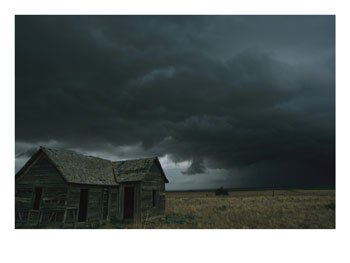Human Behavior Time to Hit the Panic Button? How we decide what’s risky Modern life requires us to be risk analyzers. Every day we size up our chances of being killed by terrorists, epidemics, and vicious All-U-Can-Eat buffets. At Who Knew? our policy is to ward off danger by whistling.
Deciding when to whistle is the hard part. True story: On the morning of September 11, 2001, with the Pentagon billowing smoke, Washington, D.C., went into a state of emergency. Rumors flew of explosions all around town. But near the Federal Reserve, I came across a man sitting calmly on a park bench, reading the newspaper. He had no interest in joining the evacuation or even listening to the latest news bulletin. He said he figured the danger was over and went back to his stock listings.

It’s worth noting that most of us, as a rule, don’t panic in disasters. We don’t run screaming down the street, knocking over baby carriages. That’s Hollywood. Sociologists have found that it’s more typical for people to help others in the heat of the moment, which was certainly true on 9/11. The park bench man was a couple of miles from the burning Pentagon but still in the heart of a likely target area for terrorists. Why didn’t he flee? Maybe he had reasoned through the situation carefully and determined it was safe to examine his portfolio. Or was he going on gut instinct? Psychologists believe that people use two different mental systems for thinking about risk.
The first is logical and analytical. The other is intuitive and emotional. The intuitive system is based on images burned into your brain during past experiences—and it often trumps the analytical one. Hard facts may say you’re in no danger, but you think: Something here doesn’t feel right. Gut instinct has helped us survive over the course of human evolution. But gut instinct can backfire. It may not warn us of dangers from unfamiliar sources. (Who expected planes to turn into missiles on that sunny September morning?) Feelings alone can also cause us to make illogical calculations.
A 1993 experiment offered people a chance to win a dollar by drawing a red jelly bean from one of two bowls. One bowl had 100 beans, 7 of them red. The other had 10 beans, only 1 red. Many people preferred the bowl with the 7 red beans. They knew their odds were worse, but they said they felt as if they had a better chance. In another experiment clinicians were far more likely to release a mental patient from a hospital if told he had a 20 percent chance of becoming violent than if told 20 out of 100 such patients would become violent.
The second scenario, though statistically equivalent to the first, created a visual image of violent patients. A savvy risk analyzer uses both the emotional and analytical systems to make good decisions, says psychologist Paul Slovic of the University of Oregon. “You need your feelings to put a cross-check on your analysis, and you need analysis to keep your feelings in check.” So keep your wits in an emergency. Analyze your situation. Crunch the numbers. But don’t be so logical you forget to run for your life.
—Joel Achenbach Washington Post Staff Writer



0 Responses to “How we decide what’s Risky”